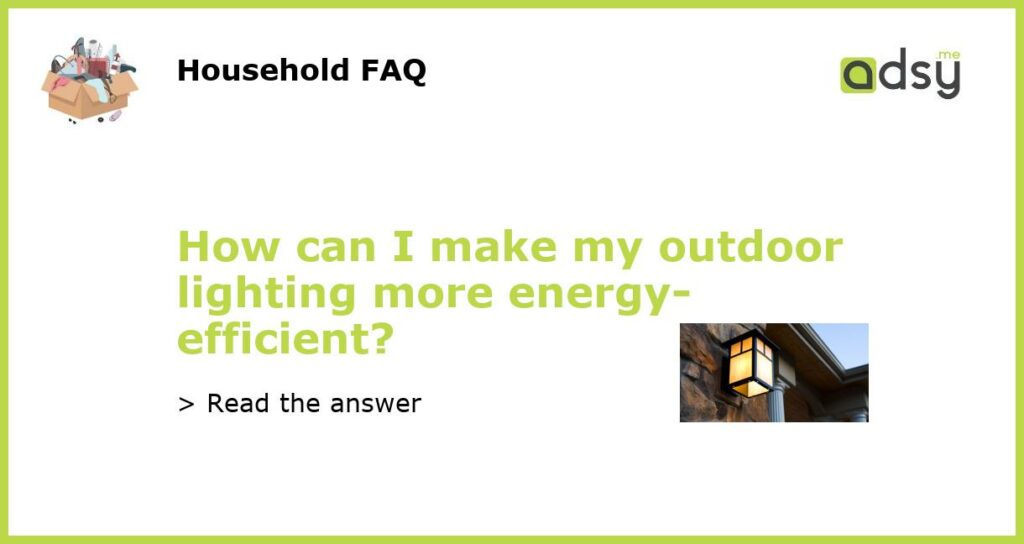The Importance of Energy Efficiency in Outdoor Lighting
Outdoor lighting is an essential part of any well-designed landscape or outdoor living space. It enhances security, improves visibility, and adds aesthetic appeal to your property. However, traditional outdoor lighting systems can be expensive to operate and may contribute to energy waste. Fortunately, there are several ways to make your outdoor lighting more energy-efficient. By implementing these strategies, you can reduce your energy consumption, lower your utility bills, and minimize your environmental impact.
Upgrade to LED Lights
One of the most effective ways to make your outdoor lighting more energy-efficient is by upgrading to LED (light-emitting diode) lights. LED lights are highly energy-efficient, consuming up to 80% less energy than traditional incandescent or halogen bulbs. They also have a longer lifespan, reducing the need for frequent bulb replacements. LED lights produce a bright and focused light that can effectively illuminate your outdoor space while using minimal energy.
Invest in Motion Sensors and Timers
Motion sensors and timers are another excellent solution for improving the energy efficiency of your outdoor lighting. These devices allow you to automate your lighting system, ensuring that lights are only activated when needed. Motion sensors detect movement and automatically turn on the lights, providing security and visibility while conserving energy. Timers, on the other hand, allow you to set specific schedules for your outdoor lights, so they only operate during certain hours. By utilizing motion sensors and timers, you can reduce unnecessary energy consumption and increase the efficiency of your outdoor lighting.
Consider Solar-Powered Lighting
Solar-powered outdoor lighting is an eco-friendly and cost-effective option for enhancing your outdoor space. Solar lights have built-in photovoltaic panels that harness solar energy during the day and convert it into electricity to power the lights at night. These lights are independent of the electrical grid, making them highly energy-efficient and reducing your reliance on traditional energy sources. Solar-powered lights are easy to install, require minimal maintenance, and allow you to enjoy outdoor lighting without increasing your carbon footprint.
Proper Placement and Direction
The placement and direction of your outdoor lights can significantly impact their energy efficiency. Properly positioning your lights can enhance their effectiveness while minimizing energy wastage. Consider the specific areas you want to illuminate, such as pathways, garden features, or architectural elements, and strategically place your lights to achieve the desired effect. Additionally, pay attention to the direction of the light beam. Aiming lights downward can reduce light pollution and ensure that the illumination is focused on the intended area, rather than being wasted or creating glare.
Regular Maintenance and Upkeep
Maintaining your outdoor lighting system is crucial for ensuring its energy efficiency and longevity. Regularly inspect your lights for any signs of damage, such as broken bulbs or faulty wiring, and promptly replace or repair them. Clean the light fixtures and remove any debris or dirt that may obstruct the light output. In addition, consider adjusting the brightness levels of your outdoor lights to an appropriate level. Brighter is not always better and can lead to excessive energy consumption. By properly maintaining your outdoor lighting, you can maximize its energy efficiency and prolong its lifespan.

